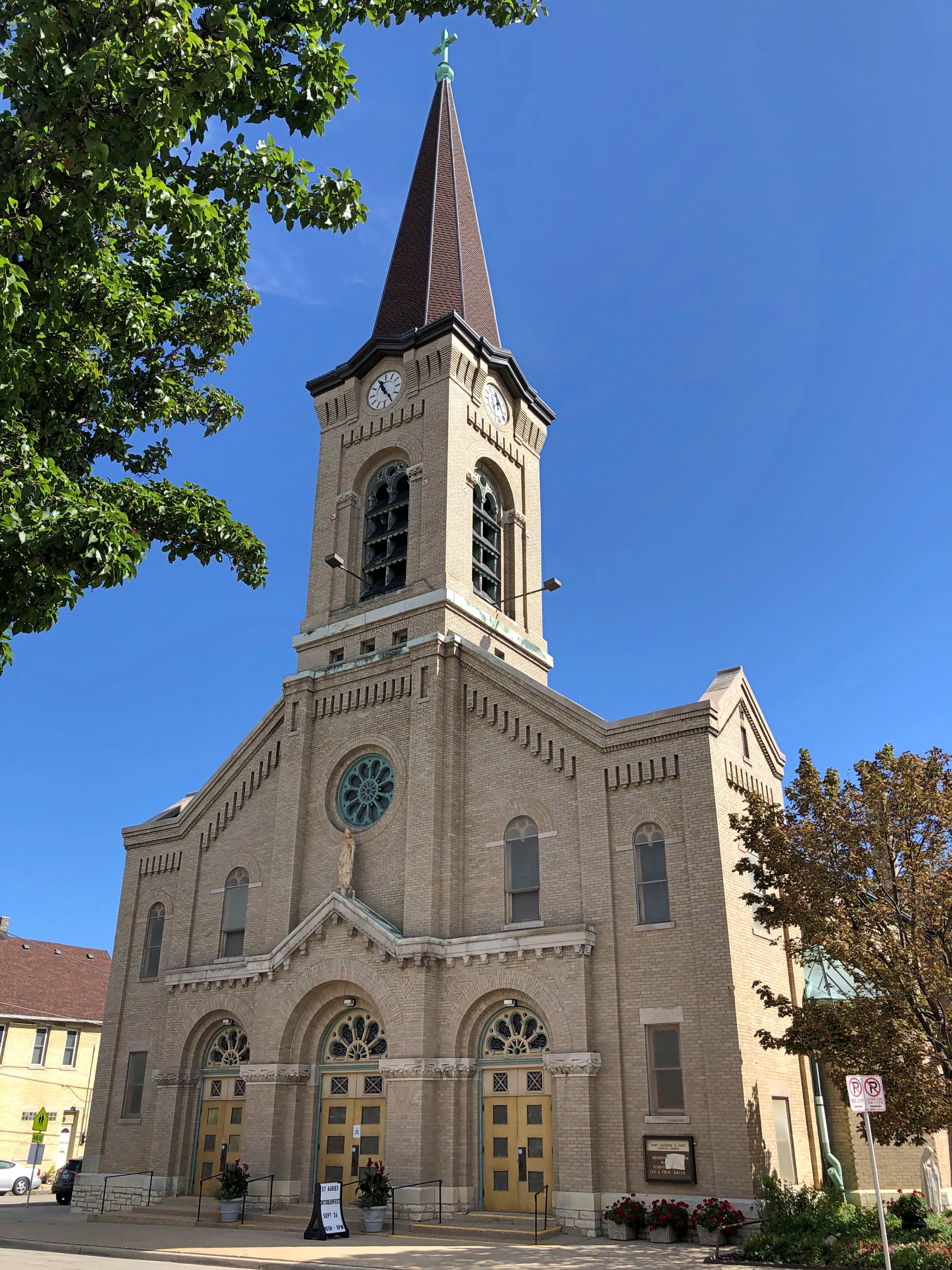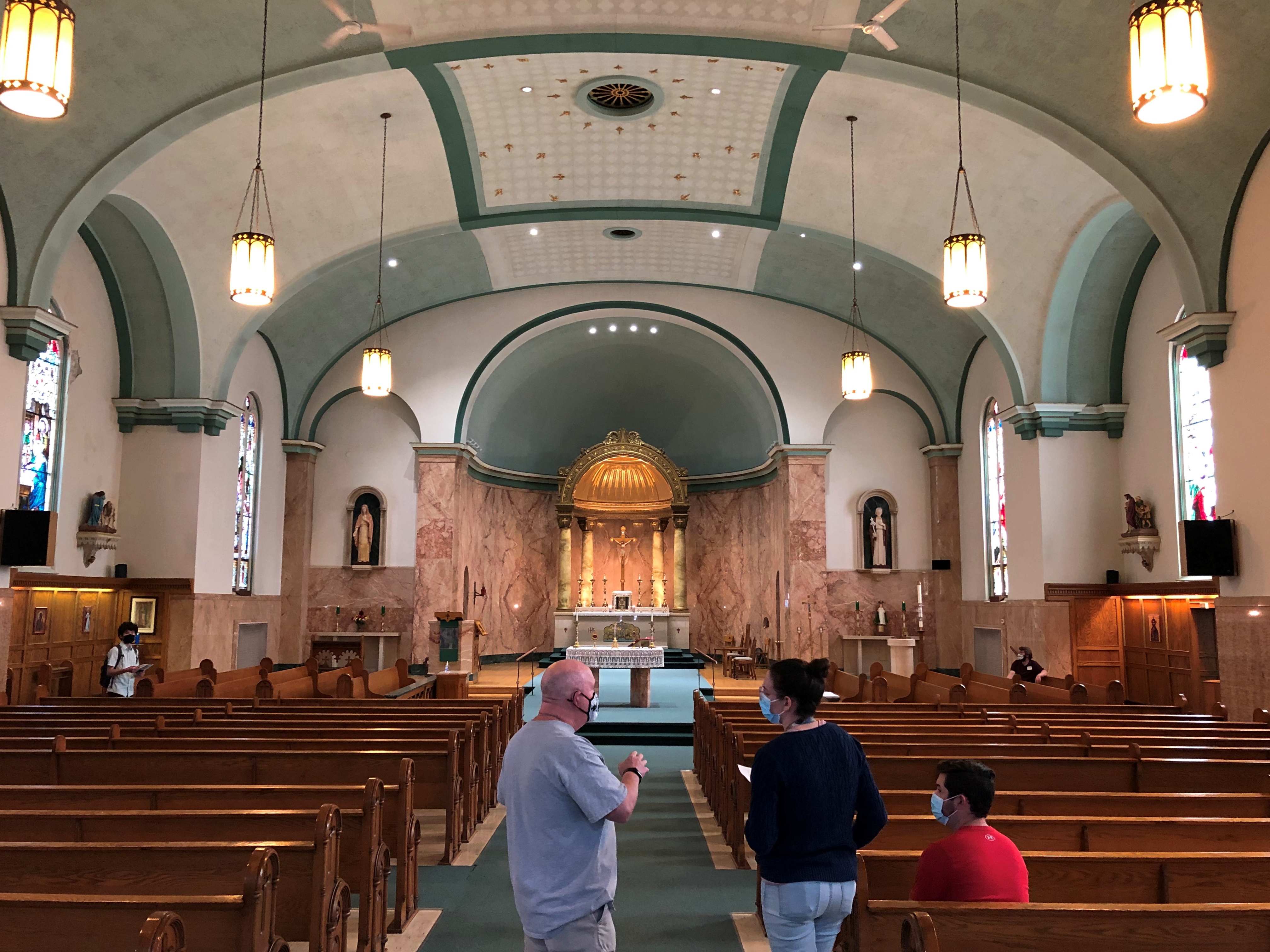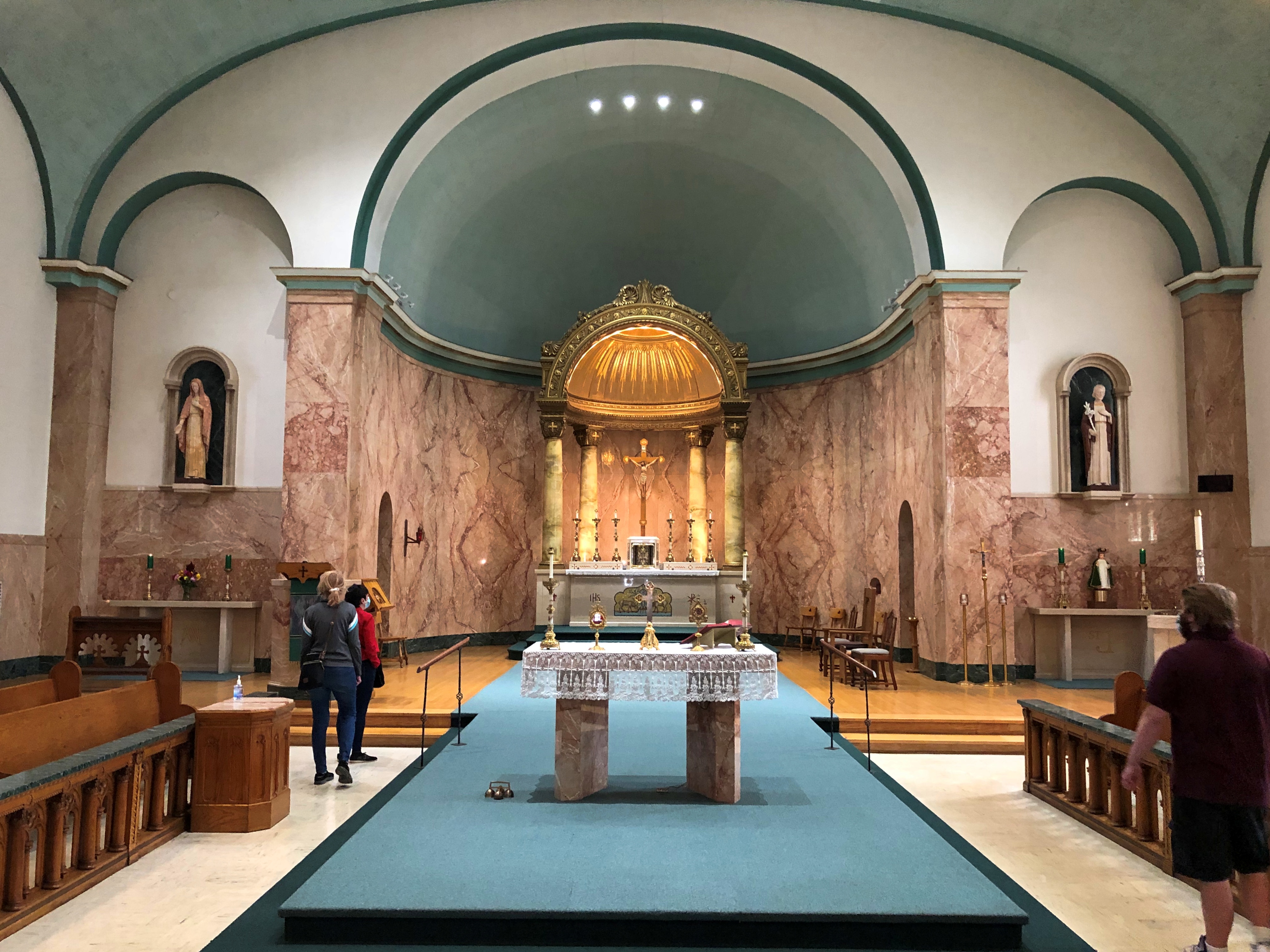Just at first glace on Saturday morning, the Bay View neighborhood in Milwaukee seemed alive with small businesses and pedestrians along S. Kinnickinnic Ave. (long ago, an Indian trace). I was glad to see it.
The place has a long history, founded separately from Milwaukee. “Captain Eber Brock Ward of Michigan opened his third rolling mill, the Milwaukee Iron Co., in Bay View in 1868,” the Bay View Historical Society says.
“Within a year the village of Bay View sprung up as a company town around the steel mill. Cottages erected for mill workers became the center of the village. Many of these cottages are still occupied today and are a part of the diverse architecture of the Bay View neighborhood.
“With village incorporation in 1879, its rapid growth and demands for city services were so great that a vote was taken and the village was annexed to the city of Milwaukee in 1887.”
Rising at a bend on Kinnickinnic is St. Lucas Evangelical Lutheran Church.
Originally, Evangelische Lutherische St. Lucas Kirche zu Bay View, since it is yet another Midwestern church founded by German immigrants, with the building completed in 1888.
Built using good old Cream City brick, a local specialty.
“The church commissioned architect Herman P. Schnetzky (1849-1916) to design its new place of worship,” Architecture of Faith says. “Schnetzky was born in the town of Wriezen in the Kingdom of Prussia… He came to Milwaukee as a young man and worked in the office of H.C. Koch and Company from 1874 or a bit earlier, [establishing] his own office in 1887.
“Schnetzky’s design for St. Lucas Lutheran is quite similar to his design for St. Martini Lutheran, built just a year prior to St. Lucas on Cesar Chavez Drive and Orchard Street on the South Side. He went on to design at least five other churches in Milwaukee by 1896, under his own name and in partnership with Eugene Liebert.”
A few blocks northwest of St. Lucas is St. Augustine of Hippo Catholic Church, finished in 1908. More Cream City brick.
It too was developed for a German-speaking congregation, with a design by Brust & Philipp, a very busy firm 100 years ago.

A volunteer told me that the platform extending out from the apse (a term he didn’t use) was added after the Catholic church “changed a bunch of things” in the 1960s (not using the term Vatican II). I guess he was used to talking to people who had no notion of that bit of ecclesiastical history. Anyway, the platform was thought better to facilitate priestly interaction with the congregation, now that they faced each other.
He didn’t know who had made the stained glass windows, except that they were original to the church and not added later. They’re wonderful.
The Stations of the Cross on the wall, on the other hand, were salvaged from another Milwaukee church that closed some years ago, though they look like they belong in their current place.
Emerging from the church, I noticed a couple of men on a porch across the street from St. Augustine.
Just a couple of regular Milwaukee guys getting ready for their Saturday doings?

